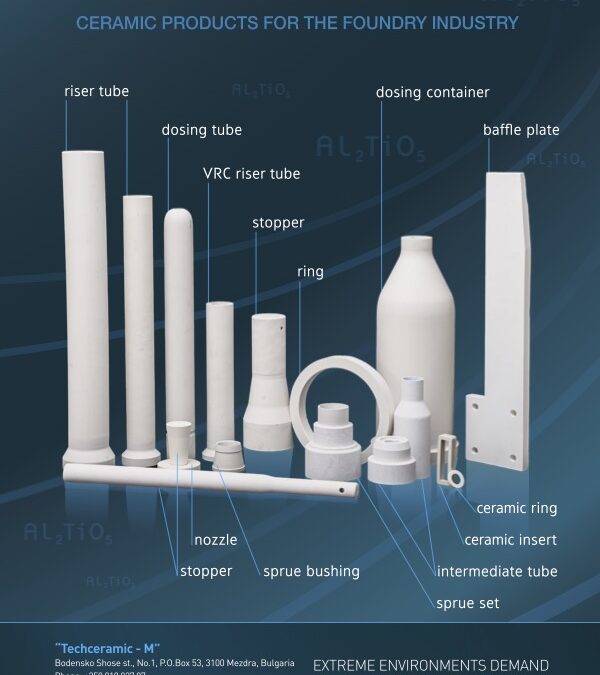Aluminum Titanate
Technical ceramics are a diverse group of materials known for their exceptional mechanical,
thermal, electrical, and chemical properties. Among these advanced ceramics, aluminum
titanate stands out as a remarkable material with unique properties that make it suitable for
various high-temperature applications. In this article, we will delve into the manufacturing
process of technical ceramics, with a particular focus on aluminum titanate.
Understanding Technical Ceramics
Technical ceramics, also known as engineering ceramics or advanced ceramics, are a class
of materials that are distinct from traditional ceramics like pottery or bricks. They are
engineered for specific high-performance applications that demand exceptional properties,
such as high melting points, extreme hardness, excellent thermal and electrical insulation,
and resistance to wear and corrosion.
Key characteristics of technical ceramics include:
- High Temperature Resistance: They can withstand extreme temperatures, making
them ideal for applications in aerospace, automotive, and energy industries. - Superior Mechanical Strength: Technical ceramics exhibit exceptional mechanical
properties, including high hardness, strength, and fracture toughness. - Electrical Insulation: They are excellent electrical insulators, making them suitable for
electrical components and insulators. - Chemical Inertness: They are highly resistant to chemical corrosion, which makes
them ideal for use in aggressive environments. - Precision Manufacturing: Technical ceramics can be precisely machined into
complex shapes, which is crucial for various applications.
The Manufacturing Process for Technical Ceramics
The manufacturing process for technical ceramics is a highly specialized and controlled
procedure that involves several stages:
1. Raw Material Selection:
The first step is to carefully select and source high-purity raw materials. These
typically include oxides of elements like aluminum, silicon, zirconium, and titanium.
2. Powder Preparation:
The selected raw materials are ground into fine powders to ensure uniform particle
size and distribution. This is crucial for achieving consistent properties in the final product.
- Mixing:
The powders are thoroughly mixed with binders and additives to create a
homogeneous ceramic slurry. This mixture is then shaped into the desired form
through processes like extrusion, pressing, or injection molding. - Green Machining:
The formed green body, which is still in a fragile state, is precision-machined to
achieve the desired shape and dimensions. This step is essential for creating
intricate components. - Drying:
The green body is carefully dried to remove moisture and solvents, ensuring
structural integrity. - Sintering:
Sintering is the key step in the manufacturing process. The green body is heated to
high temperatures (often above 1,000°C) in a controlled atmosphere. During
sintering, the ceramic particles bond together, resulting in a dense, high-strength
ceramic material.
Aluminum Titanate: A Specialized Technical Ceramic
Aluminum titanate (Al2TiO5) is a specialized technical ceramic that has garnered attention
for its unique properties, particularly in high-temperature applications. It exhibits a low
coefficient of thermal expansion (CTE) over a broad temperature range, making it suitable
for applications where thermal shock resistance is critical.
The manufacturing process for aluminum titanate includes:
1. Raw Material Preparation:
High-purity alumina (Al2O3) and titania (TiO2) powders are carefully mixed in precise
proportions to form a homogeneous blend.
2. Shaping:
The mixed powders are shaped into the desired form, such as plates, crucibles, or
riser tubes, dosing tubes and sprue system, using pressing or extrusion.
3. Sintering:
The shaped green bodies are subjected to high-temperature sintering in a controlled
atmosphere to form fully dense aluminum titanate ceramic components.
Technical ceramics, including aluminum titanate, play a vital role in numerous high-
temperature and demanding applications across various industries. The manufacturing
process for these advanced materials involves a series of well-defined steps, from raw
material selection to precision machining and sintering. Understanding and controlling these
processes are essential to produce technical ceramics with exceptional properties, ensuring
they meet the stringent requirements of modern technology and industry.

